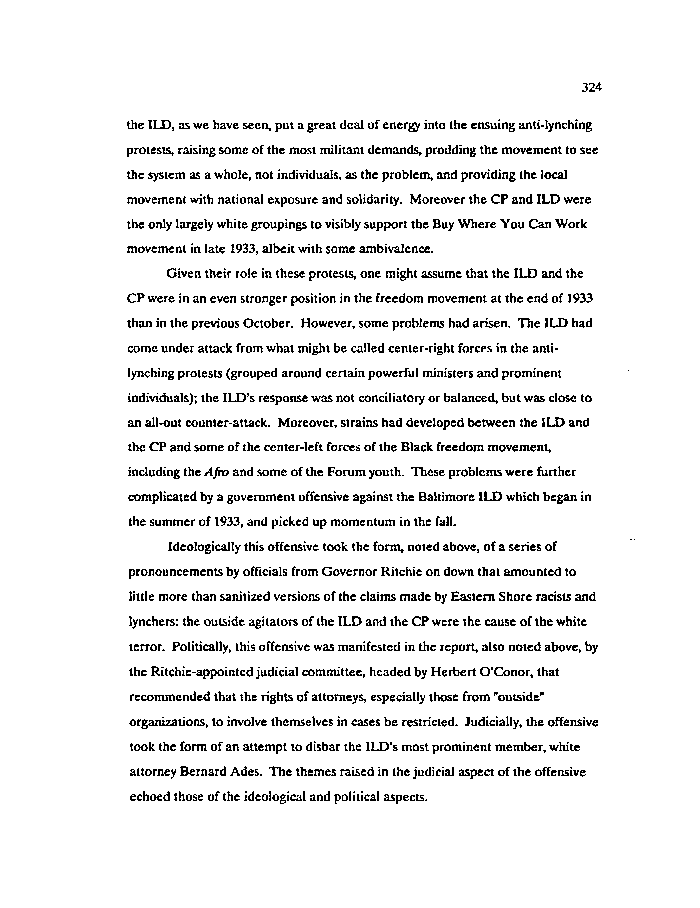|
324
the ILD, as we have seen, put a great deal of energy into the ensuing ami-lynching
protests, raising some of the most militant demands, prodding the movement to see
the system as a whole, not individuals, as the problem, and providing the local
movement with national exposure and solidarity. Moreover the CP and ILD were
the only largely white groupings to visibly support the Buy Where You Can Work
movement in late 1933, albeit with some ambivalence.
Given their role in these protests, one might assume that the ILD and the
CP were in an even stronger position in the freedom movement at the end of 1933
than in the previous October. However, some problems had arisen. The ILD had
come under attack from what might be called center-right forces in the anti-
lynching protests (grouped around certain powerful ministers and prominent
individuals); the ILD's response was not conciliatory or balanced, but was close to
an all-out counter-attack. Moreover, strains had developed between the ILD and
the CP and some of the center-left forces of the Black freedom movement,
including the Afro and some of the Forum youth. These problems were further
complicated by a government offensive against the Baltimore ILD which began in
the summer of 1933, and picked up momentum in the fall.
Ideologically this offensive took the form, noted above, of a series of
pronouncements by officials from Governor Ritchie on down that amounted to
little more than sanitized versions of the claims made by Eastern Shore racists and
lynchers: the outside agitators of the ILD and the CP were the cause of the white
terror. Politically, this offensive was manifested in the report, also noted above, by
the Ritchie-appointed judicial committee, headed by Herbert O'Conor, that
recommended that the rights of attorneys, especially those from "outside"
organizations, to involve themselves in cases be restricted. Judicially, the offensive
took the form of an attempt to disbar the ILD's most prominent member, white
attorney Bernard Ades. The themes raised in the judicial aspect of the offensive
echoed those of the ideological and political aspects.
|

